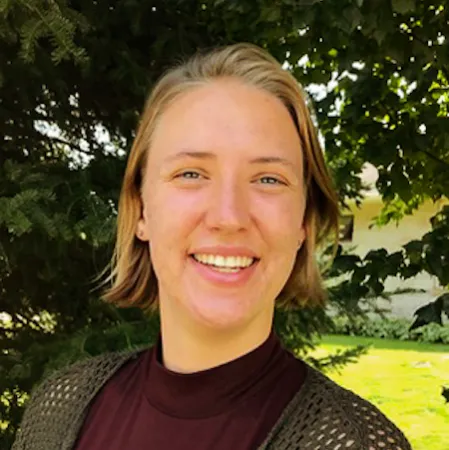SESYNC is pleased to announce University of Maryland (UMD) graduate student Rachel Wegener as this year’s recipient of the Dr. Richard Payne Graduate Fellowship. This fellowship aims to recognize excellence in graduate students within UMD’s College of Computer, Mathematical, and Natural Sciences by supporting innovative and actionable research that directly links social and environmental sciences. The award honors Dr. Richard Payne, a UMD Professor of Biology, University Senator, and a dedicated instructor and mentor for students and postdocs.
Rachel Wegener is currently a graduate student in UMD’s Department of Atmospheric and Oceanic Studies. Her research focuses on marine heat waves (MHWs)—unusual events in which patches of sea water exhibit higher-than-normal temperatures.
In addition to causing physical changes to the water, these areas of hotter water temperatures can have major impacts—both biological and economic. For example, in the past, large MHWs occurring off the Atlantic Coast of the northeastern United States have affected lobster landings, which in turn affected the lobster fishing industry. MHWs can last anywhere from several days to years, and it’s not just this one geographic area feeling the effects. In fact, MHWs can occur all over the world—from the Mediterranean Sea to the Pacific Ocean, Rachel explained.
Through her research, Rachel is hoping to better understand the physical drivers that cause MHWs, which could ultimately lead to improved forecasting techniques. She explained that if scientists can better predict when and where MHWs will occur, communities might be able to better adapt to MHWs and their effects through policy and permitting changes.
Rachel’s interest in understanding MHWs stems from experience gained while working on interdisciplinary projects as a software engineer. After earning her bachelor’s degrees in physics and environmental science from the University of Denver, Rachel completed several research internships and then worked as a software engineer, doing data processing and analysis. In this position, Rachel explained she was able to see the use of environmental data in real-world applications. In her next role, she worked on making data more accessible on collaborative projects—with players representing various backgrounds and interests. These projects focused on how to use vast amounts of data to solve environmental problems, which ultimately inspired her to go to graduate school to study oceanic and atmospheric science, she said.
“There was this table I was at, with my previous jobs, where there were scientists, computer scientists, software engineers, community members, stakeholders, and people whom the science was trying to apply to, and they were all kind of working together to solve this sort of problem around how we access data. While I was enjoying what I was doing from the software engineering side, I found that I was really, really most interested in the scientific application side of things.”
By combining her computer science experience with her oceanography studies, Rachel is hoping to further push the boundaries of what scientists can learn about MHWs. With a better understanding of this environmental problem, scientists may be able to provide data that can inform stronger climate-adaptation policies. These policies could be especially helpful for individuals whose livelihoods are impacted by MHWs.
“The piece I think that is really fascinating is how computer science can really expand or inhibit the science questions that are possible,” she said. “What we have in terms of computing resources can influence what types of scientific questions we can ask, and so that has been a really interesting and rewarding part of blending these two spaces,” she explained.
Through the fellowship at SESYNC, Rachel said she hopes to learn more about the application of scientific work to policy and science communication to further the impact of her research.
